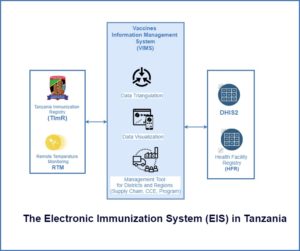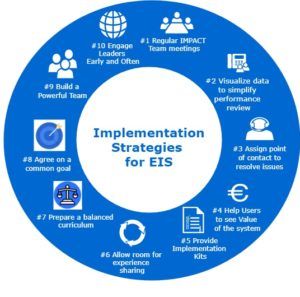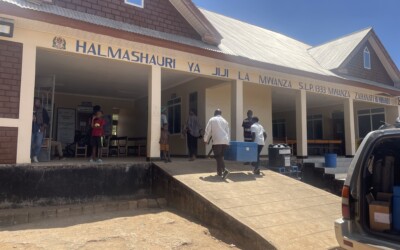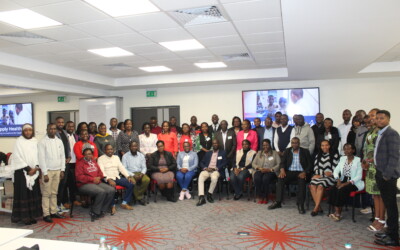Tanzania Immunization and Vaccine Development (IVD) program and partners are currently implementing the integrated Electronic Immunization System (EIS) with the ultimate goal of improving vaccine availability and potency. The system has two components: (1) a Vaccine Information Management System (VIMS) designed to capture and integrate information on routine immunization, cold chain equipment (CCE), and in country supply chain data at district and regional level to enable data triangulation for better decision making and (2) the Electronic Immunization Registry (EIR) at facility-level in which health workers can record all children from birth and automatically generate immunization schedules and reports. VIMS and EIR are connected through an interoperability layer that enables the decision makers at district, regional and national levels to access timely data across all levels and immunization domains through a paperless information system.

In March 2018, JSI through the inSupply project in Dodoma, equipped 53 extraordinary individuals – Mentors – with the knowledge, skills, tools, and support systems to drive this change. Over the course of one month, mentors have dedicated time from their jobs to take part in roll out activities and have reached more than 300 health care workers in 205 facilities through on-the-job training. Health care workers have registered more than 2000 children in the EIS, empowering themselves and their fellow health care workers with ability to better plan for vaccination and track any defaulters. This is just the beginning as the target is to reach all 349 immunizing health facilities in the district and register at least 90% of children targeted for Immunization.
How did we do it?
It’s not enough to provide the tools and training to the Mentors, to accelerate their impact. We needed to build a strong network of leaders from across their districts and the region. In Dodoma, multidisciplinary IMPACT Teams were trained to work together to use data and proven approaches to strengthen intended outcomes; in this case, to roll out of immunization registry and improve vaccine program performance.
Here are our top 10 strategies for implementing the Electronic Immunization System:

#9 Build a powerful team
What It Takes To Be In an IMPACT Team? Sharing the Team selection criteria in advance sets you in the path to success. In Dodoma IMPACT teams brought together
- Men and women of all ages, education levels and professions (Immunization officers, pharmaceutical personnel, health officers, information and communication officers, clinical staff, reproductive and child health coordinators)
- Committed individuals ready to support an intensive training plan and provide continuous support and mentorship to health care workers
- Leaders with strong personal integrity, commitment and desire to drive change in their society
#8 Agree on A common Goal
The agreed common goal for Dodoma EIS IMPACT Teams is to work together to ensure 90% of registered children are reached and that all immunizing health facilities will always have a supply of vaccines for our community, by reporting and using EIS for resupply.
This goal was agreed during the training workshop and is reflected in IMPACT team implementation plans.
#7 Prepare a well Balanced Curriculum
JSI adopted the EIS training curriculum shared by PATH and modified to have a good balance of the technical, data use and change management materials as shown by the graphic. The 5 day workshop included practice sessions in between the theory sessions delivered through adult learning principles. Mentors built and tested new skills in facilitation, leadership, and change management.
#6 Provide Opportunities for Experience Sharing
In the Dodoma workshop, champions from other areas that have successfully implemented the system, facilitated some training sessions, and acted as resources for technical assistance to newly trained staff.
#5 Provide Implementation Kits
Kits are intended to help the mentors and coordinators of the system roll out to support trained staff. Dodoma teams were enabled by developing guidance materials that included Mentors Handbooks, Device quick start guides, System Configuration, Implementation Planning Boards e.t.c
#4 Help the users see Value in the System
Without value you have nothing! We developed a short session for pitching the innovation to leaders and health care workers and trained mentors to use non-technical language to explain the benefits.
#3 Provide a Point of Contact for Resolving Issues
Each District was assigned a coordinator for support so users are be able to talk to a person immediately if there is an issue. Resolving issues quickly is critical and over time, you will need to analyse reported issues and improve the system.
#2 Simplify Reviewing Performance by Providing Dashboards and Reports
It can be a simple excel based indicator tracking tool or dashboard embedded in the rolled out system. This is a powerful tool for the implementing team as it helps them see their progress towards achieving the goal. IMPACT teams in Dodoma rely on data visualization in VIMS to measure their performance.
#1 Have regular IMPACT Team meetings
This allows you to tap into the power of collective problem solving. Mentors in Dodoma use these meetings to analyze data, identify root causes and plan for action.


